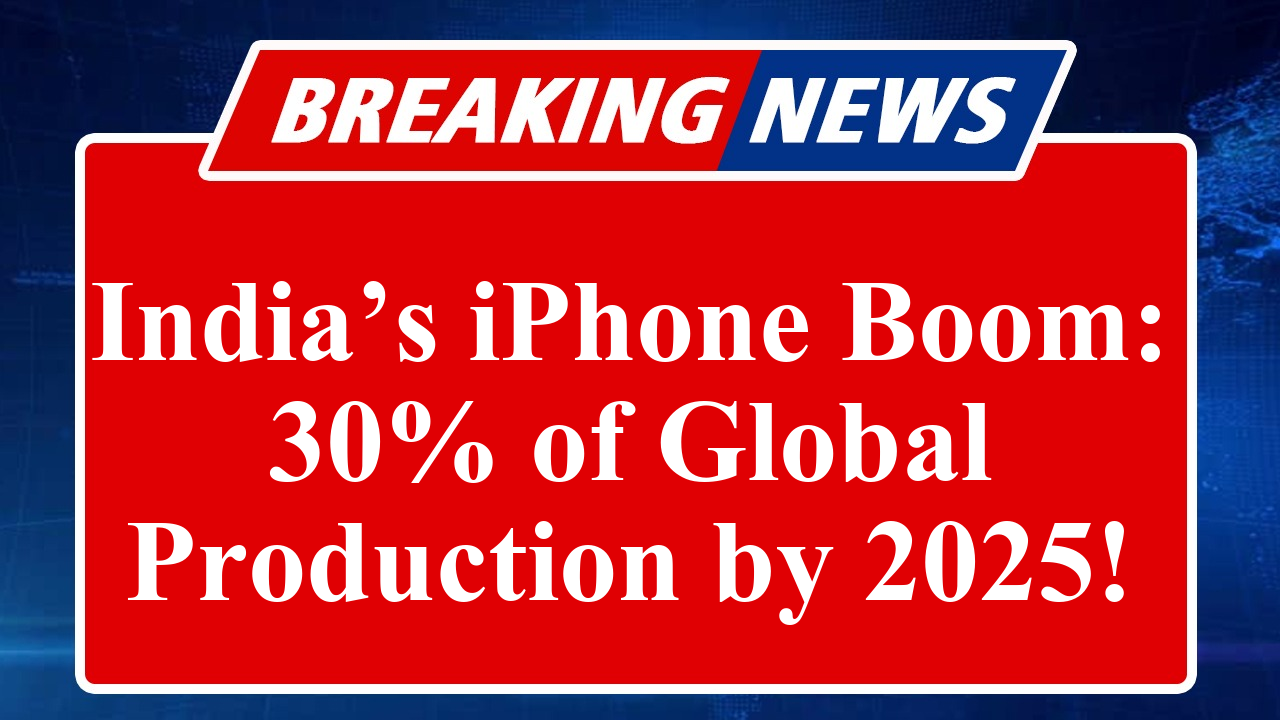India is poised to produce 25-30% of global iPhones by 2025, driven by Apple’s supply chain shift from China. Foxconn’s new Devanahalli plant and Tata’s expansion fuel this growth, despite challenges like Chinese engineer withdrawals and U.S. tariff pressures. India’s exports surged 57% in 2025, with 77% of iPhones shipped to the U.S.
India’s Rise as Apple’s iPhone Production Powerhouse
India is rapidly emerging as a cornerstone of Apple’s global iPhone manufacturing strategy, with projections indicating that the country will account for 25-30% of global iPhone production by the end of 2025. This seismic shift, driven by geopolitical tensions, U.S.-China trade wars, and India’s favorable manufacturing ecosystem, marks a significant pivot from China, where Apple has historically relied for the bulk of its production.
Foxconn, Apple’s largest contract manufacturer, is spearheading this transition with a massive new facility near Devanahalli, Bengaluru, spanning 300 acres. The plant, expected to be fully operational by late 2025, is set to significantly boost India’s iPhone output, pushing the country’s share of global production from 18% in early 2025 to as much as 30% by year-end, according to Counterpoint Research. This follows a remarkable surge in production, with Apple’s vendors in India manufacturing iPhones worth over ₹15,000 crore in May 2025 alone, matching the country’s domestic consumption for 2024.
The shift is not without hurdles. In July 2025, Foxconn recalled over 300 Chinese engineers and technicians from its Indian plants, a move reportedly influenced by Beijing’s efforts to curb technology and skilled labor exports. This withdrawal, which began two months prior, threatens to disrupt Apple’s ambitious plans, particularly as it ramps up for the iPhone 17 launch in September 2025. However, Foxconn has devised a contingency plan, bringing in experts from Taiwan and the U.S. to mitigate the impact and ensure production continuity.
Tata Electronics has also emerged as a key player, rapidly scaling its operations through the acquisition of Wistron’s assembly facility and expanding its Hosur plant. In May 2025, 89% of iPhones produced in India were exported to the U.S., up from 58% a year earlier, reflecting Apple’s strategy to bypass steep U.S. tariffs on Chinese-made products, which reached 55% in 2025. Tata’s growing control over India’s component ecosystem has reduced import dependency, further strengthening the country’s position.
India’s iPhone exports have seen explosive growth, with 20.4 million units shipped between January and May 2025, a 57% year-on-year increase. Of these, 77% were destined for the U.S., driven by Apple’s rush to stockpile inventory ahead of U.S. tariff deadlines. In April 2025, India outpaced China in monthly iPhone exports to the U.S., shipping 3.3 million units compared to China’s 900,000, a testament to the rapid realignment of Apple’s supply chain.
Government incentives, such as the Production Linked Incentive (PLI) scheme, have been instrumental in this transformation. Foxconn and Tata have received ₹2,807 crore and ₹2,068 crore, respectively, in PLI benefits from FY23 to FY25, bolstering their expansion efforts. Additionally, India’s push to localize component sourcing—casing, glass, and paints—aligns with the government’s mandate for Apple to derive 30% of its product value locally by 2028.
India’s manufacturing ecosystem is also benefiting from broader industry trends, with companies like Samsung and Google increasing production to hedge against U.S.-China tensions. Counterpoint Research predicts India will capture 20% of global smartphone output in 2025, despite a projected 1% global manufacturing downturn due to tariffs and industry slowdown.
Disclaimer: This article is based on recent news reports, industry data, and analyst insights from sources including Counterpoint Research, Canalys, Omdia, and media outlets such as The Economic Times, Business Standard, and Bloomberg. Information is accurate in July 2025, but geopolitical and economic factors may impact future developments.

